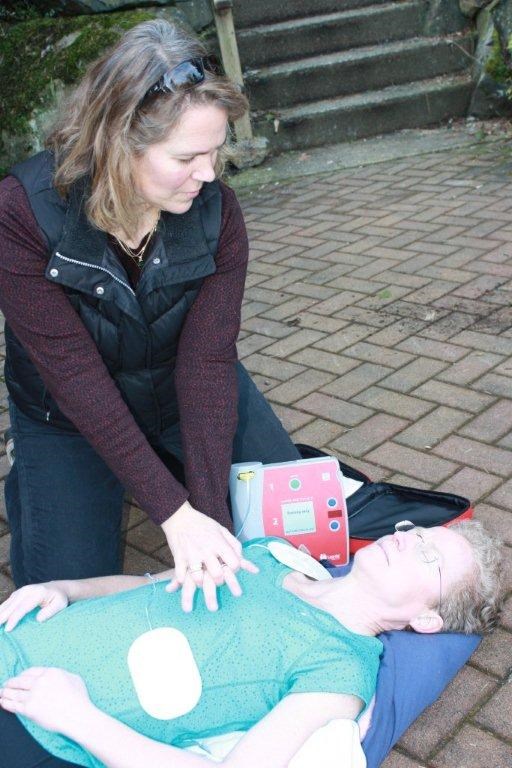Now that you know a little bit about the anatomy of the heart and heart attacks from last week, let’s talk about saving lives with Cardiopulmonary Resuscitation (CPR) and Automated External Defibrillators (AEDs).
Do you know the difference between a heart attack and cardiac arrest? A heart attack is something you are experiencing, while cardiac arrest is when you are without any vital signs. This is when CPR is becomes necessary.
With AEDs popping up in many locations on Bowen, it’s time to talk about the relationship between CPR and AED’s.
Combined with CPR, the use of an AED may increase the likelihood of survival by 75% or more. But you can’t have one without the other! Doing compressions on a person’s chest and giving life saving breaths and then quickly adding an AED is the perfect marriage.
First Aid is easy to learn-anyone can do it. A first aid course is inexpensive , only takes a few hours of your time, and it may be the best investment you will ever make.
In a life threatening emergency situation, like choking, seconds really do count. Without oxygen, the heart will soon stop beating. The average time in town for an ambulance to arrive is 8 - 10 minutes. On Bowen this could be longer.
We all need to be prepared to react quickly and effectively in order to save a person’s life.
There are an estimated 40,000 cardiac arrests each year in Canada. That is one Cardiac Arrest every 12 minutes. Without rapid and appropriate treatment, most of these Cardiac arrests will result in death. Thousands of lives could be saved through public access to AED’s.
Don’t wait until it is too late. Register for a course and empower yourself with life-saving skills.
CARDIAC ARREST FACTS:
- Sudden cardiac arrest can happen to anyone, anytime, anywhere.
- As many as 85% of Cardiac Arrests occur in homes and public places.
- After more than 12 minutes of ventricular fibrillation , the survival rate from cardiac arrest is less than 5%.



